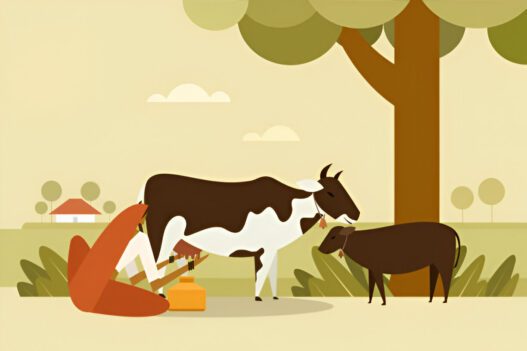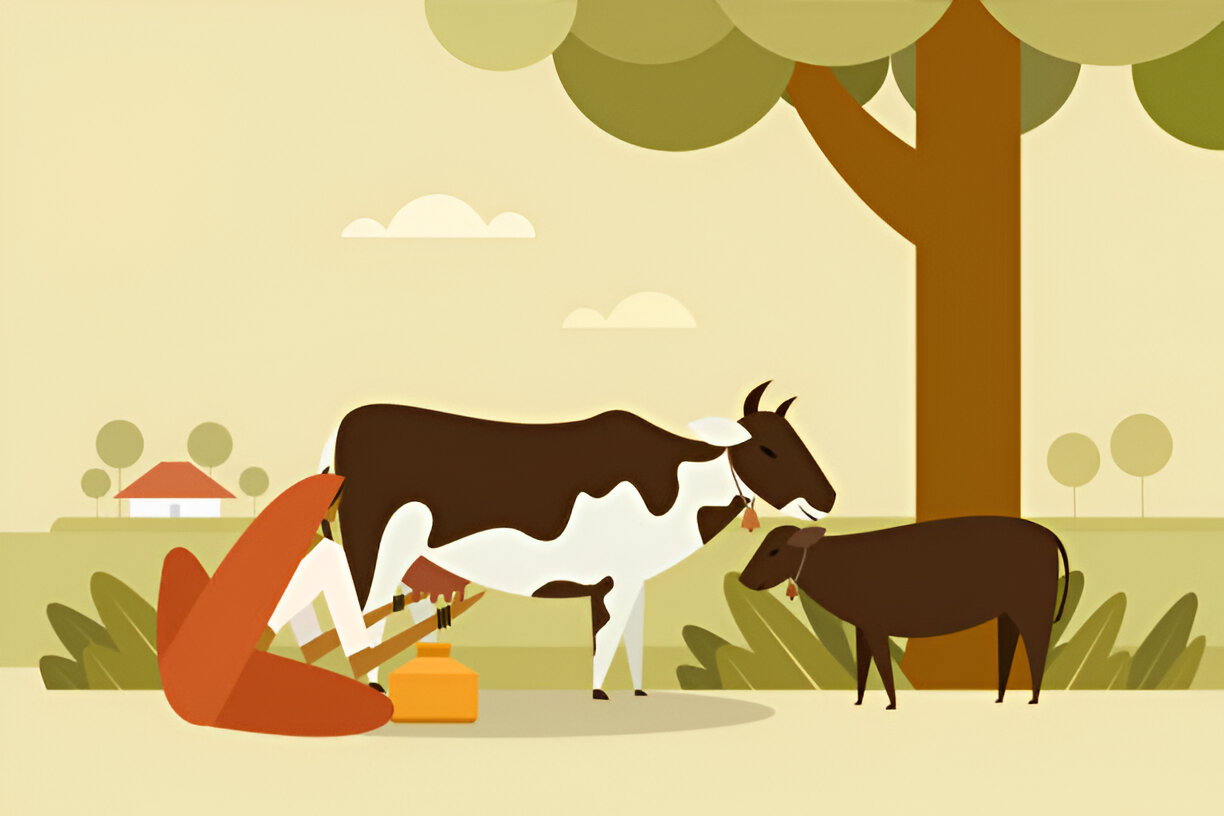The Rashtriya Gokul Mission (RGM) is a significant initiative by the Government of India for the development and conservation of indigenous bovine breeds. This piece explores the revised operational guidelines for the RGM for the period 2021-2026, highlighting key changes, objectives, and implementation strategies. The RGM aims to enhance milk production, improve genetic merit, and promote sustainable practices in the livestock sector.
Introduction to the Rashtriya Gokul Mission
The RGM, launched in December 2014, is crucial for the upliftment of rural communities, as a majority of low-producing indigenous animals are owned by small and marginal farmers and landless laborers. The scheme focuses on enhancing milk production and productivity, leading to the multiplication of elite indigenous breeds and increased availability of indigenous stock. The RGM is proposed to continue under the umbrella scheme Rashtriya Pashudhan Vikas Yojna.
Key Objectives of the RGM
The RGM is designed to achieve the following objectives:
-
Enhance the productivity of bovines and increase milk production using advanced technologies.
-
Propagate the use of high genetic merit bulls for breeding purposes.
-
Enhance Artificial Insemination (AI) coverage through a strengthened breeding network.
-
Promote indigenous cattle and buffalo rearing and conservation in a scientific manner.
Key Changes in the Revised Guidelines
The revised operational guidelines for 2021-2026 include the following significant changes:
-
Reduced Breed Multiplication Farm Size: The size of breed multiplication farms in North Eastern and Hilly States has been reduced from 200 to 50 animals in milk.
-
Self-Financing Allowed: Self-financing is now permitted for the establishment of Breed Multiplication Farms, subject to specific terms and conditions.
-
Inclusion of Veterinary Universities: Government Veterinary Universities are now included as implementing agencies under the RGM.
Funding Pattern
The RGM components are implemented on a 100% grant-in-aid basis, except for:
-
Accelerated Breed Improvement Programme: A subsidy of ₹5000 per IVF pregnancy is provided to participating farmers.
-
Sex Sorted Semen: A subsidy of up to 50% of the cost of sex-sorted semen is provided to participating farmers.
-
Breed Multiplication Farms: A subsidy of up to 50% of the capital cost is made available to entrepreneurs.
Scope and Area of Operation
-
Area: The Rashtriya Gokul Mission will be implemented throughout the country.
-
Scope: All components related to the genetic upgradation of the bovine population are eligible for funding under the RGM.
Implementing Agencies
The implementing agencies for the RGM include:
-
State Livestock Development Boards
-
State Milk Federations
-
Central Frozen Semen Production and Training Institute
-
Central Cattle Breeding Farms
-
Central Herd Registration Scheme
-
National Dairy Development Board (NDDB)
-
Indian Council of Agricultural Research (ICAR) and its Institutes
-
Central Universities
-
Government Veterinary Universities
Institutional Setup and Fund Flow
-
Funds are released directly to Implementing Agencies (IAs).
-
IAs use the Public Financial Management System (PFMS) for expenditure.
-
IAs submit utilization certificates through the State Government.
-
Participating Agencies (PAs) submit proposals to IAs.
-
IAs channel funds to PAs for project implementation.
Key Components of the RGM
The RGM includes several key components:
-
Availability of High Genetic Merit Germplasm:
-
Bull Production Programme (Progeny Testing, Pedigree Selection, Genomic Selection, Import of Bulls, Embryo Production)
-
Support to Semen Stations
-
Implementation of IVF Technology
-
-
Breed Multiplication Farms: Establishment of farms to produce elite heifers.
-
Extension of AI Coverage:
-
Establishment of Multi-Purpose AI Technicians in Rural India (MAITRIs)
-
Nationwide AI Programme
-
Use of Sex Sorted Semen for assured pregnancy
-
Implementation of National Digital Livestock Mission (Livestock)
-
-
Development and Conservation of Indigenous Breeds:
-
Assistance to Gaushalas, Gosadans, and Pinjarapoles
-
Administrative support for Rashtriya Kamdhenu Aayog
-
-
Skill Development and Farmers Awareness: Training programs and extension activities.
-
Research and Development: Innovation in bovine breeding.
Central Level Implementation Mechanism
-
A Project Sanctioning Committee (PSC) is responsible for approving projects.
-
Central Monitoring Units (CMU) ensure quality standards.
-
A Project Management Agency (PMA) assists in implementation and monitoring.
State Level Implementation Mechanism
-
State/UT Level RGM Review Committees monitor progress.
-
Annual workshops are organized by participating states.
-
State Implementation Agencies follow state procurement procedures.
Social Capital Usage
-
Panchayati Raj Institutions (PRIs) are integrated for monitoring at the village level.
-
Pashu Sakhis are used for awareness campaigns.
Monitoring and Evaluation
-
The project will be monitored by NDDB and other designated agencies.
-
Monthly progress reports will be prepared by participating agencies.
-
A call center will be used for verification of AI and calf information.
-
Online monitoring will be done through the INAPH database.
-
A third-party evaluation will be conducted by an independent agency.
Conclusion
The revised operational guidelines for the Rashtriya Gokul Mission (2021-2026) reflect the government’s commitment to strengthening the indigenous bovine sector. By focusing on genetic improvement, technological advancements, and community participation, the RGM aims to create a sustainable and profitable livestock industry, benefiting farmers and contributing to the overall growth of the agricultural sector.




